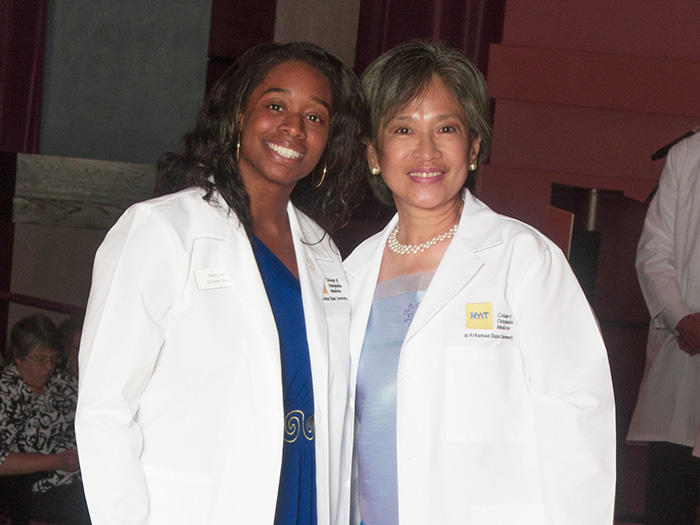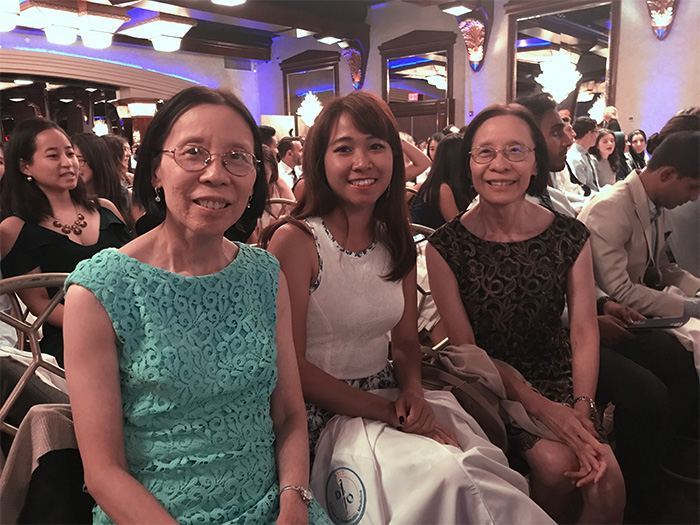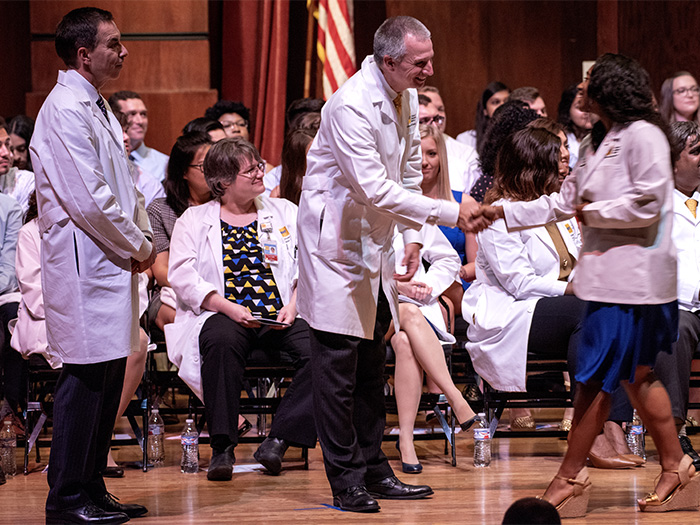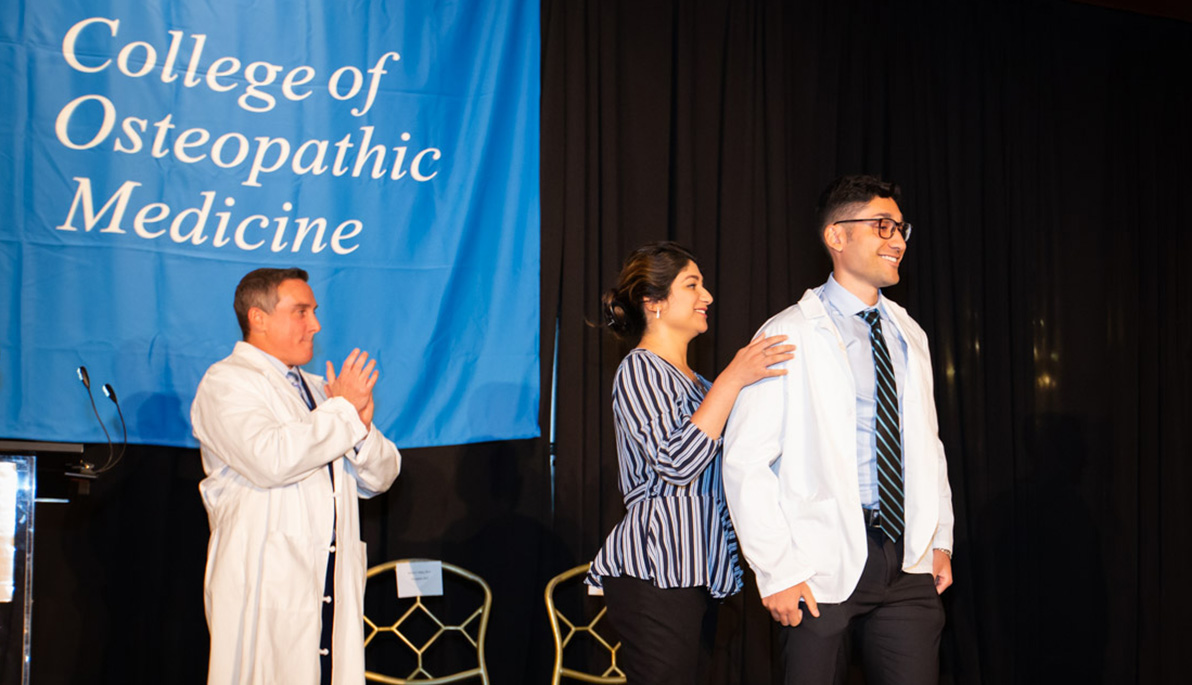News
Medical Students Receive Symbolic White Coats
August 21, 2019
Pictured: NYITCOM student Raiyan Ali is coated by his sister, Neha Ali (B.S. ’13, D.O. ’17) at the White Coat Ceremony at the Crest Hollow Country Club on Long Island.
NYIT College of Osteopathic Medicine’s (NYITCOM) newest medical students received their white coats during a week of celebration in both Long Island and Jonesboro.
Seen as a rite of passage and the official start of medical school, the white coat has been a symbol of cleanliness, trust, and healing in the medical profession since the late 1800s. These themes were present at the NYITCOM-Arkansas White Coat Ceremony, held August 9 in the Fowler Center on the Arkansas State University campus.
The newest class is excited to support the mission of improving healthcare in the Mississippi Delta region and underserved communities. Six of the eight Delta region states were represented by the 120 students of the NYITCOM at A-State Class of 2023. Among these students was Taylor Lewis of Little Rock, Ark.

Newly coated medical student Taylor Lewis (left) with guest coater Leila Concepcion, M.D.
“It’s the celebration of a big accomplishment, but it also marks the start of a new journey,” Lewis said. “It was great to have so many of my family and friends here supporting me as I begin medical school and take another step toward my dream of being a physician.”
“This year’s White Coat ceremony was particularly special because it marks a significant milestone for our Arkansas campus,” said Shane Speights, D.O., site dean of NYITCOM-Jonesboro. “The Class of 2023 is our fourth class, their arrival puts our campus at full enrollment for the first time. It was great to welcome the new class to Jonesboro and celebrate this very special time with the students and their families.”
The NYITCOM Long Island community continued the momentum on August 14 at the Crest Hollow Country Club, where 312 new medical students received their white coats. Five of the students were coated by family members who are also physicians and NYITCOM graduates, known as legacy coaters, including Lauren Zhao was coated by her twin great aunts Irene Moy Chow (D.O. ’81) and Susie Moy Chow (D.O. ’81).

Lauren Zhao was coated by her great aunts Irene Moy Chow (D.O. ’81) and Susie Moy Chow (D.O. ’81).
“These are my great aunts and they were from the inaugural class of the school. I just feel honored to be coated by them so many years later and at the same school!” said Zhao.
The NYITCOM-Long Island Class of 2023 will go on to fill the shoes of the Class of 2019, who are entering premiere residencies in specialties ranging from obstetrics and gynecology to psychiatry, anesthesiology, and pediatrics. Among the many impressive residency placements were institutions such as the Mayo Clinic School of Graduate Medicine, The Cleveland Clinic Foundation, and Walter Reed Army Medical Center.

NYITCOM-Arkansas Site Dean Shane Speights, D.O., (center) and NYITCOM Dean Jerry Balentine, D.O., shake the hands of the newly coated medical students.
As he did several days earlier in Jonesboro, Jerry Balentine, D.O., dean of NYITCOM and vice president for Health Sciences and Medical Affairs, welcomed the newest Long Island medical students.
“The white coat symbolizes many things,” said Balentine. “For you, right now, it symbolizes a change. A new path, a profession that you have chosen and in a certain way has chosen you. It symbolizes healing but also puts responsibility on your shoulders. To be compassionate, full of empathy, a great communicator and an informed and intelligent healer.”
Physicians began wearing white coats in the 1880s, when the famous physicians Joseph Lister and Ignaz Semmelweis championed hygiene and hand-washing as a standard medical practice. During this time the white coat became a symbol of the highest cleanliness, and from a practical viewpoint, white coats were much easier to wash than the typical dark wear that physicians wore prior to the turn of the century.





